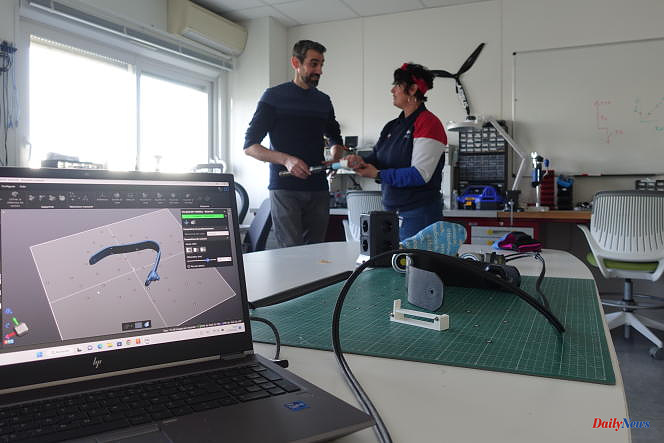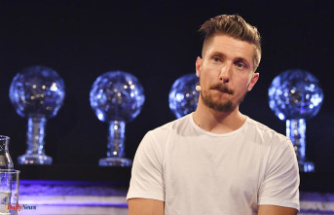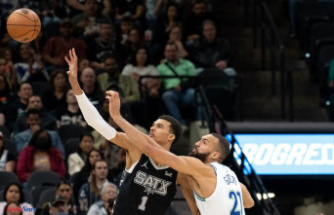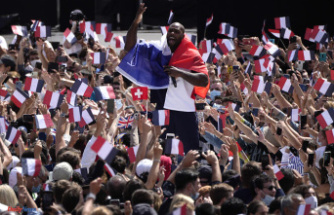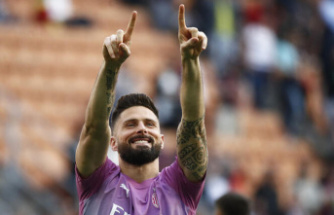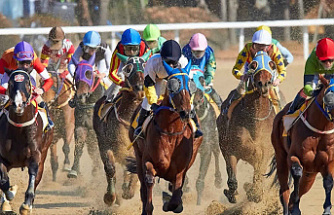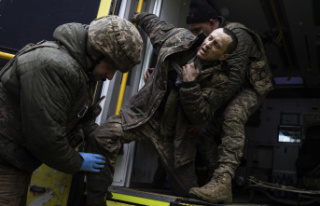Usually, digital milling machines, industrial turning machines and 3D printers at the Toulouse site of Airbus (Haute-Garonne) are busy producing aircraft. But, since May 2022, the aeronautical company has put its technology at the service of a completely different challenge: producing the equipment for the Paralympic athletes of the French team.
The agreement with the National Sports Agency (ANS) was formalized on March 17. Valued at half a million euros, it is of particular importance in the race for medals. France aims to be in the top 5 nations of the Paralympic Games in Paris. More than 500 days from the planetary event, the technical battle has already begun.
In the "protospace", the Airbus prototyping center in Blagnac, the voice of Elur Alberdi, world champion in mixed double sculls para-rowing (PR3), resonates between the machines: "I always fear of losing my oar if there is wind or waves on the body of water. It would be silly to let an Olympic medal slip away like that."
The rower from the Endaika club in Hendaye suffers from a lack of mobility in her right wrist which handicaps her oar grip. “I can only move the tips of my knuckles, so I use a glove to hold on. But this equipment is bulky, expensive, and it is not specifically adapted to my pathology,” explains the 45-year-old rower.
"No product exists on the market for Paralympic athletes," notes Christophe Debard, engineer and head of protospace, at his side. But here, we have the ability to find suitable solutions. Athletes' equipment is not really different from an airplane wing: we seek to optimize performance by working on the structure, the material, the aerodynamics, the mechanical system, the tribology. Here, for example, we have the prototype of a rigid blade, armed with a bumper for the fingers, which will allow Elur to marry the movement of the oar without constraint ".
" It is magic ! “laughs the rower, jacket of the France team on the shoulders. Through the window of the laboratory, Christophe Debard shouts at his trainer: "You will tell me if he passes the medical approval! ". Last step before use, the equipment must be validated by the medical commissions of the federations.
Equipment, a strategic axis
As with Elur Alberdi, nineteen projects have been selected to date by the ANS and Airbus, as part of the "Blue Ambition" plan, which targets high-potential athletes to optimize their performance. “Our goal is to win 22-25 Paralympic titles and 65-70 medals overall. That is to say, to double our balance sheet from the Rio Games, notes Arnaud Litou, Paralympic performance manager at the ANS. To achieve this, the material is a lever on which we can act. The expertise that Airbus brings is revolutionary for us, it allows us to offer athletes, coaches and federations a technological advantage over other nations”.
If the commercial partnership with Airbus was formalized in March, the exchange of skills dates back to 2017, when engineers had volunteered their help to improve the chair of David Toupé, champion of para-badminton. “I needed a room so I knocked next to my house, at Airbus, explains the Toulouse sportsman. Not only was I able to acquire the part, but I also continued to evolve my chair with the engineers: the wheels, the chair, the seat, the weight, without having to buy fifteen chairs or go through them all. my evenings. In three months, we did what would have taken me five years on my own."
David Toupé's "2.0" chair did not go unnoticed by the ANS, who were then looking to change gears after a disappointing 12th place in the medal table at the Rio Paralympic Games in 2016. That same year, the design studio of the German car manufacturer BMW redesigned the racing wheelchair of the American athletics team, winning seven titles in the wheelchair categories (T52, T54) and marking the beginning of a true technological race between nations.
Privacy
However, the agreement with Airbus does not guarantee any exclusivity to the ANS. "A question of competition", assures one on the side of the aeronautical company. “Our profession remains aircraft, we are not going to open a new branch, specifies Sabine Klauke, technical director of Airbus. But we are proud to put our technologies at the service of French athletes. It drives us to innovate. »
Half of the envelope allocated to participating federations has already been spent, but not all projects are at the same stage of progress. Some equipment only requires a few hours of work, while others mobilize up to 40 people over several months.
Paralympic triathlon champion (PTS4 category), Alexis Hanquinquant, is one of the beneficiaries of this program. "When the ANS offered me this line of work, it was obvious. I was the first to run and cycle with the same carbon prosthesis and it saved me a lot of time on the transition. But since the Tokyo games, I have been imitated by my competitors. So I have to innovate so as not to lose my technical advantage. I won't say more, it's still a secret," explains the champion, who came specially from Seine-Maritime to test his equipment.
"It's a matter of timing. Not too early not to be imitated, not too late to ensure that the equipment is in the nails of international regulations, weighs his trainer, Nicolas Pouleau. Material, shape, aerodynamics, confidentiality remains in order. "It will not replace training, says Alexis Hanquinquant, but it could be the difference between a chocolate medal and a Paralympic title in Paris".

